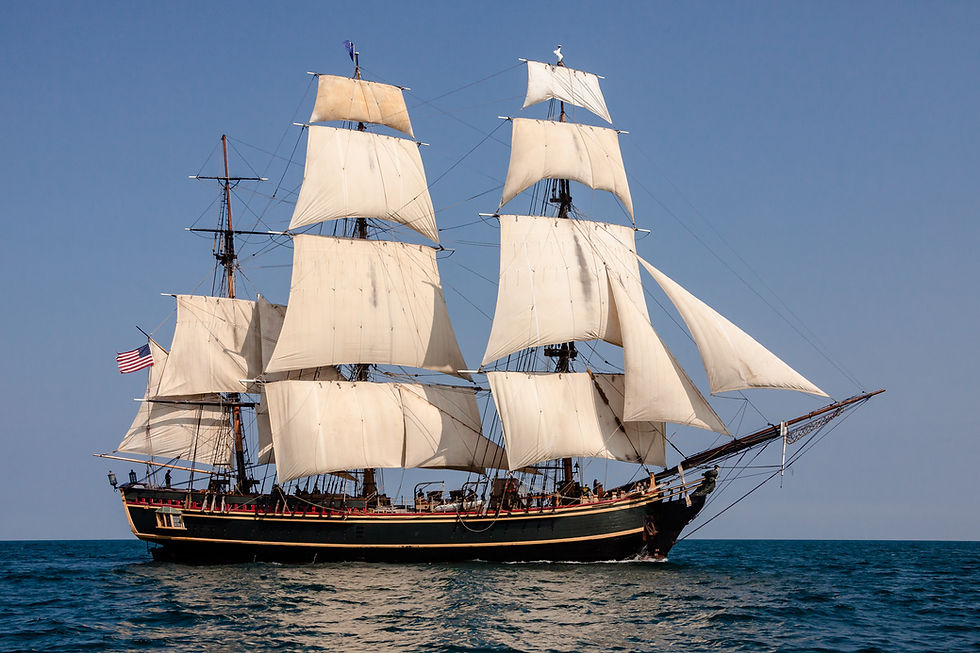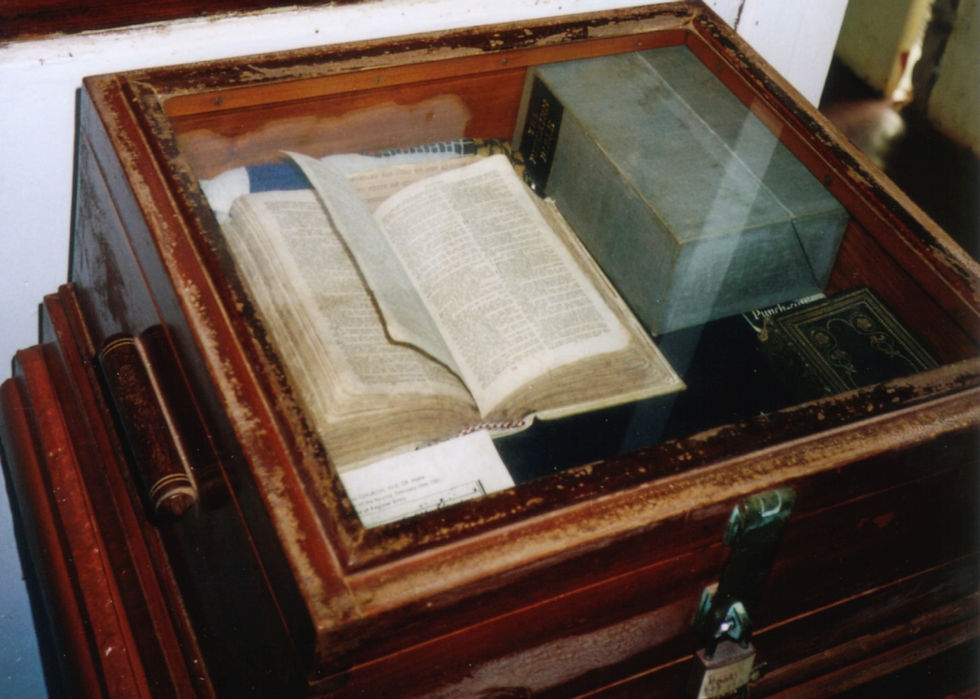Apr 28 After the Mutiny on the Bounty
- Pearl of Great Price
- Apr 27, 2021
- 3 min read

The story of the Mutiny is famous and well known but how did it end? Today we look at the story of the surviving mutineer George Adams who repented and using the Ship's Bible educated the children on Pitcairn island and thus converted the whole of the Island to Christianity
Today, on April 28th, 1789 a band of hedonistic sailors staged the famous mutiny on the Bounty. The ship had left England on a mission to collect and transport breadfruit plants from Tahiti to the West Indies. A five-month layover in Tahiti, during which many of the men lived ashore and formed relationships with native Polynesians, led to a slackening of military discipline as the men's duties during Bounty's stay in Tahiti were relatively light. Many led promiscuous lives among the native women—and 18 officers and men, received treatment for venereal infections. Captain Bligh remained chaste himself, was tolerant of his men's activities, although he still expected them to do their duty efficiently, on the return journey. It was then that relations between Bligh and his crew deteriorated and he began handing out increasingly harsh punishments, criticism and abuse.
Fletcher Christian, the master’s mate and leader of the mutiny had twice voyaged with Bligh to the West Indies, and the two had formed a master-pupil relationship, through which Christian had become a skilled navigator. He became the brunt of a lot of discipline and Bligh drove him to breaking point. He was often humiliated by the captain—sometimes in front of the crew—for real or imagined slackness, while severe punishments were handed out to men whose carelessness had led to the loss or theft of equipment. Floggings, rarely administered during the outward voyage, now became increasingly common. Bligh accused Christian of stealing coconuts from the captain's private supply and punished the whole crew for this theft, stopping their rum ration and reducing their food by half. At this point Christian considered constructing a raft with which he could escape to an island and take his chances with the natives. Two of his fellow officers urged him not to desert; and assured him that he would have the support of almost all on board if he were to seize the ship and depose Bligh.
Bligh, and 18 loyalists were set adrift in the ship's open launch. In an incredible feat Bligh navigated more than 3,500 nautical miles and kept a daily journal. To keep up morale, he told stories of his prior experiences at sea, got the men singing, and occasionally lead them in prayer. However, in his journal Bligh recorded that "our situation was miserable; always wet, and suffering extreme cold ... without the least shelter from the weather". On 2 June, the launch cleared Cape York, the extreme northern point of the Australian continent. Bligh turned south-west, and steered through a maze of shoals, reefs, sandbanks, and small islands later known as the Prince of Wales Channel. On 14 June, with a makeshift Union Jack hoisted, they sailed into Kupang harbour, in Indonesia. In Kupang, Bligh reported the mutiny to the authorities, and wrote to his wife: "Know then, my own Dear Betsey, I have lost the Bounty
The mutineers settled on Pitcairn island and set fire to the Bounty. Only the ballast stone remains of the wreck in Bounty Bay. Although the settlers were able to survive by farming and fishing, there was serious tensions among them. Soon alcoholism, murder, and disease had taken the lives of most of the mutineers.

With just three survivors, John Adams, Ned Young, and Matthew Quintal, the thuggish Quintal was killed with a hatchet whilst drunk. Adams operating under the name Alexander Smith, repented, and transformed the community. With Ned Young, they turned to the Scriptures, using the ship's Bible as their guide for a new and peaceful society, teaching the children to read and write. The Bible is still on display in a Pitcairn church. Young eventually died of an asthmatic infection, but Adams continued his work of educating the women and children and the island soon converted to Christianity. The American sailing ship Topaz was the first to rediscover Pitcairn 8 years later and Adams was eventually granted amnesty for the mutiny. In 1825 Adams was married to Teio, or 'Mary', who had already borne Adams' only son, George Adams . He would die in the island aged 61 and his grave on Pitcairn is the only known grave site of a Bounty mutineer. It has a replacement headstone, the original lead-covered wooden grave marker having been taken back to Britain where it is now on display in the National Maritime Museum in Greenwich, London. The main settlement and capital of Pitcairn, Adamstown, is named after him That’s all from the pearl of great price today – I hope you’ve enjoyed listening, please subscribe and leave a comment on the blog if you have time.
.jpg)


Comments